Need a systematic, visual, engaging format for teaching vocabulary in your classroom? A Frayer model template is a simple solution. We have Dorothy Frayer to thank for this fabulous graphic organizer. In 1969, she and her people at the University of Wisconsin wanted to give students an efficient way to learn new vocabulary. The Frayer model template was born, and has been present in classrooms ever since. Let’s talk about how to get this going in your classroom!
What is a Frayer Model?
A frayer model template consists of a key word at the center, surrounded by four equal sections. Each section has a heading indicating a specific feature, characteristic, or use of the word. There are multiple heading variations that may be used.
4 Reasons This format works:
- It’s consistent and becomes familiar to students.
- It’s visually engaging and organized.
- It requires students to make a connection to the words as they complete it.
- It gives students a chance to really “get to know” the word, so they can use it in context as they learn.
Here’s a Frayer Model Example
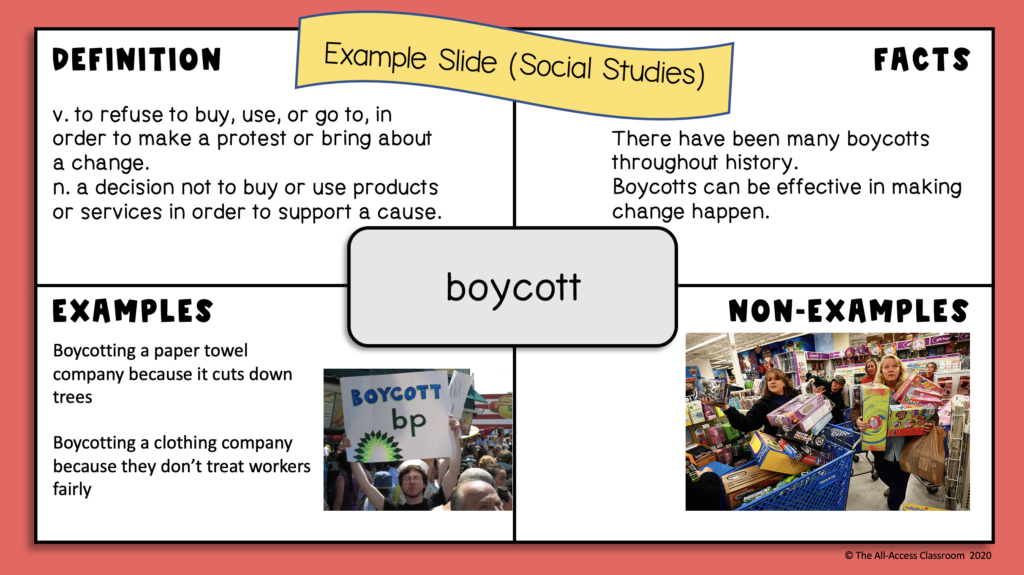
This Frayer model example shows these headings: definition, facts, examples, and non-examples. By completing these distinct sections, students have the opportunity to investigate, find meaning, and develop a well-rounded understanding of a key term.
You may decide that other variations and combinations of headings are better suited for your students, grade level, and content. Here are some possibilities:
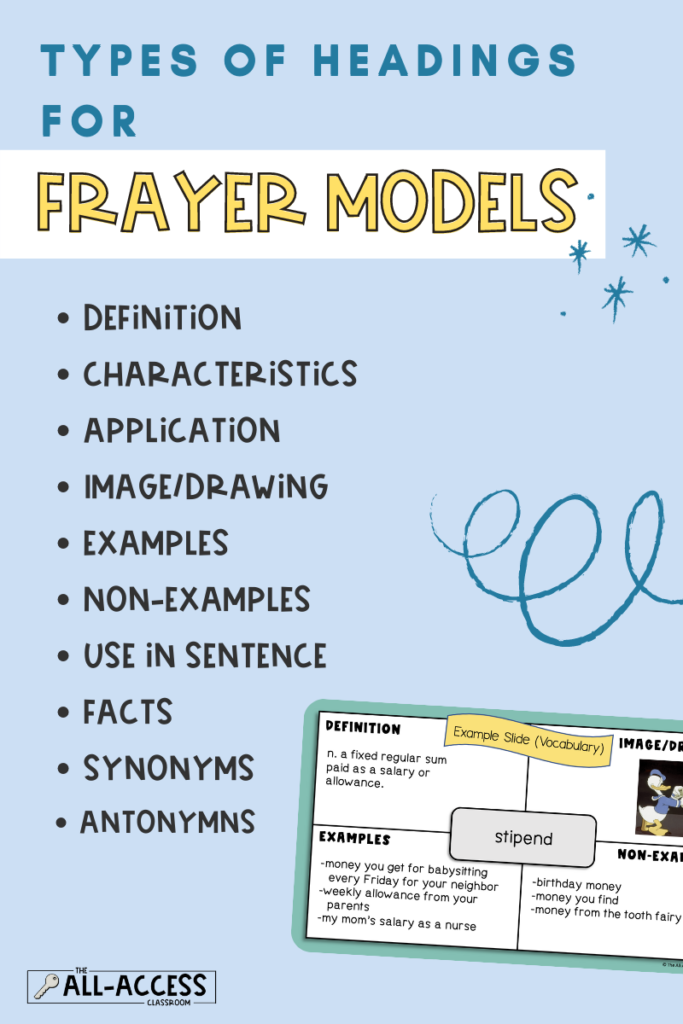
Why is a Frayer Model for Vocabulary Introduction Great for English Learners?
As you know, explicit vocabulary instruction is of the utmost importance in supporting English learners well. In fact, studies have shown that of all the instructional strategies you could implement, it has the most impact. You may have ELs who are fluent in social English, but unfamiliar with the tier 3 (content-specific) terms used in your lessons. Choose a handful of words that are essential to understanding the new content, and use a Frayer model to teach (and reteach!) those words. Your ELs will gain confidence and be far more engaged with your lesson. And their comprehension will have a major boost!
How to Use a Frayer Model in Your Classroom
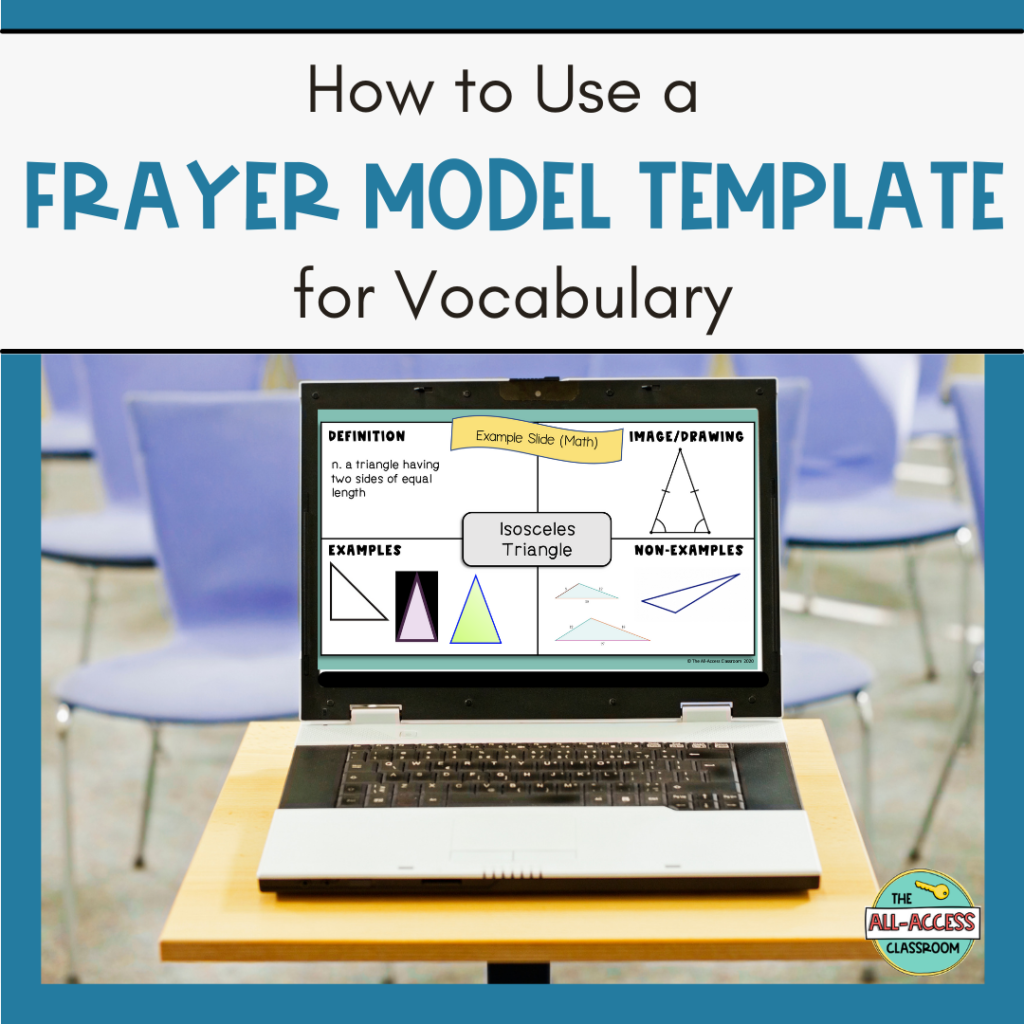
1. I’d recommend taking some time to introduce new key terms at the beginning of a lesson. How many terms? My personal rule-of-thumb is to use your grade level as a gauge. Teach fifth grade? Introduce five terms at a time. We want to give kids a change to “marinate” in these words a bit, and too many may result in overload and lack of retention. Just pick the terms that have the most important role in your lesson.
2. Model, model, model! Until students are super familiar with what the headings mean, you’ll need to go through some Frayer models with them first, guiding and involving them in the process.
3. For remaining words, let students work in pairs or small groups to fill in their own Frayer model templates. They can teach their words to the class!
4. Use the completed Frayer models as an instant word wall –created by the students themselves! You could color code the words by part of speech, or by common features/relationships. Students will refer to the Frayer models again and again throughout your unit. Talk about a powerful support!
Repeated Exposures are a MUST!
As you start a lesson or unit, it may be tempting to teach your key terms using Frayer models and then move on, never revisiting them again. Don’t do it! 🙂 This will not be effective in helping students retain and USE the words. To provide the needed review and practice, I recommend that after the initial introduction, you:
- Ensure that students have easy access to the Frayer models they’ve completed. (word wall, printed Frayer models, digital copy assigned to them)
- As you use or see the terms throughout the lesson or unit, take the opportunity to highlight them, write them on the board, include in a discussion prompt, or have the students repeat the word out loud. Encourage your ELs to use the terms by providing sentence frames for speaking or writing activities.
- During that extra five minutes you have here and there, play a quick game on white boards. You give a scenario, a sentence with a blank, or a definition. The students will refer to the word wall or digital resource to determine which word is the best fit for the prompt. You can have the students in teams, as well, earning points for correct responses.
Try it Out!
Frayer model templates couldn’t be easier to implement–with any lesson! It’s fun for students to complete them digitally, so they can search and find their own image online to include on the template! Here’s the digital version I made for my classroom. You can assign the templates to students via Google Classroom, and print them if you’d like! Click the image to check it out! ⬇
If you’re curious to see some other ways to Build Background Knowledge at the beginning of your lessons, check out:
How to Make Building Background Your Ultimate Lesson Booster!
MariBeth Plankers’ Article on Frayer Models
The Teacher Toolkit Page on Frayer Models
or the
Building Background Digital Activity Bundle (which includes my digital Frayer model template resource!)
Have fun trying out Frayer Models with your kiddos! I’d love to meet you on Instagram! I share lots of tips for cultivating accessible instruction!
Always here for you,


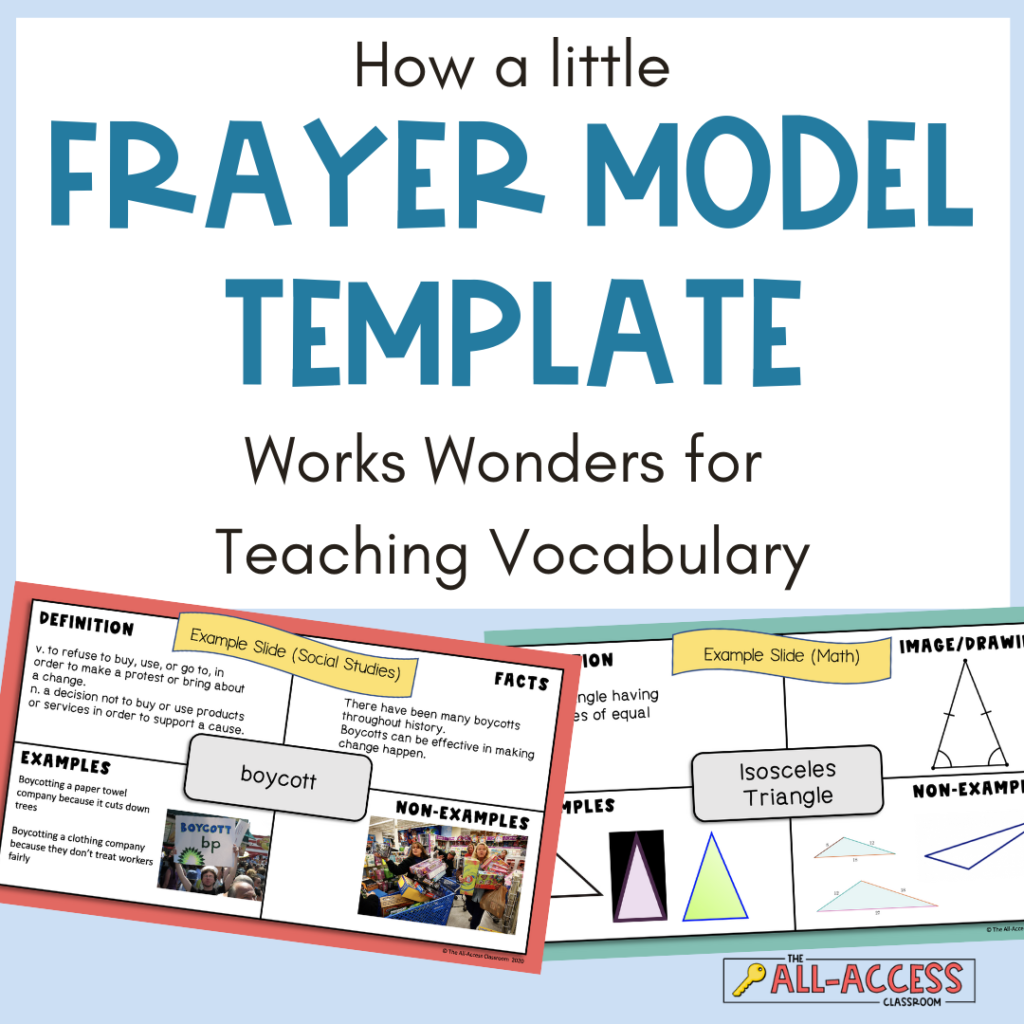
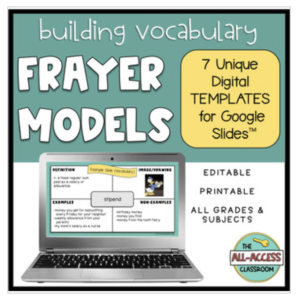
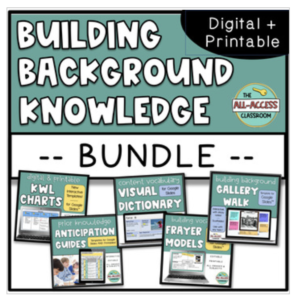

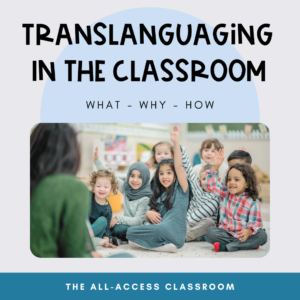


2 Responses